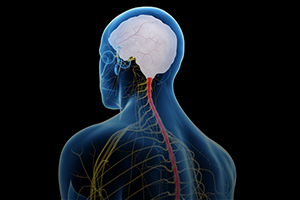Reversing Paralysis

A recent study has demonstrated that chronic paraplegia due to spinal cord injury may be reversible through electrical stimulation. And, unlike previous studies, neurological function was shown to persist even after the stimulation was turned off.
The researchers in charge of the study credit the success of the procedure to a thorough understanding of the way in which the brain naturally communicates with the spinal cord. An array of electrodes activates specific spinal regions to mimic the signals that the brain would normally produce. The exact timing and location of the stimulation is essential to not only trigger movement but also to grow new nerve connections and strengthen those in parts of the spine that are still intact.
The study was composed of three patients, all of whom had partially crushed spinal cords and were unable to walk. All three participants were able to walk (with support of their body weight) after only one week of learning how to coordinate their brain with the electrical stimulation and movement. Over the course of several months, they were able to walk hands-free over a distance of one kilometer, and motor function was improved even when the stimulation was turned off.
The developers believe that, if used sooner following an injury (before the neuromuscular system has atrophied), the technology should have an even greater potential for recovery.
For information: Gregoire Courtine, Federal Institute of Technology at Lausanne, B3 3 192 134, Ch. des Mines 9, CH-1202, Geneve, Switzerland; phone: +41-21-69-38343; email: gregoire.courtine@epfl.ch; website: https://courtine-lab.epfl.ch/